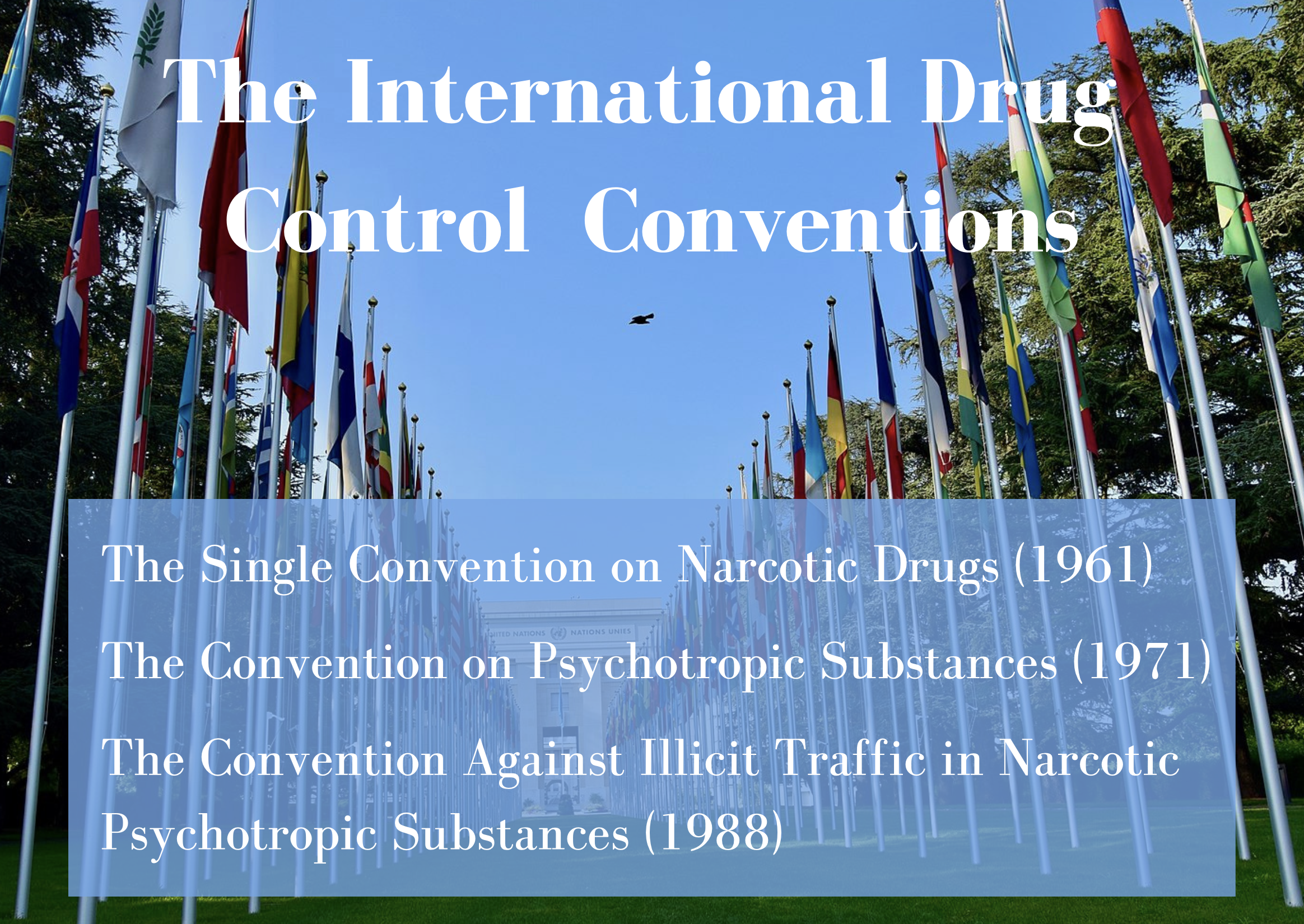6.2 The Three International Drug Conventions

The Single Convention on Narcotic Drugs (1961)
By the 1960s, international treaties related to drug control were complex, contradictory, and difficult to enforce (Bewley-Taylor & Jelsma, 2011). As a result, the existing treaties were consolidated into one comprehensive document, The Single Convention on Narcotic Drugs (1961). This convention contained a scheduling (classification) system for different classes of drugs and their associated policies (Boister, 1996; Lines, 2010), with cannabis being placed alongside cocaine and opium in the highest and most restrictive schedule (Lande, 1962). It also expanded control measures to include the cultivation of plants that can be used for the production of narcotics and the abolition of traditional uses (e.g., religious and quasi medical uses) of opium within 15 years and coca and cannabis within 25 years of the convention coming into force (Armenta & Jelsma, 2015; Lande, 1962).
The Convention on Psychotropic Substances (1971)
A huge cultural shift occurred in the 1960s and with it increased experimentation with substance use (Wesson, 2011). Many of the psychoactive drugs (e.g., psychedelic drugs/hallucinogens, stimulants, sedatives) used at this time were synthetic in nature, a product of post-World War II pharmaceutical development, and were not included in the Single Conventions scheduling system (Armenta & Jelsma, 2015; Sinha, 2001; Wesson, 2011). Discussions over the need for an additional international control mechanism culminated in a meeting in Vienna Austria in 1971 and the signing of the Convention on Psychotropic Substances. Although designed using the Single Convention as a template, the psychoactive substances convention was heavily influenced by the pharmaceutical industry and as a result contained a much weaker set of controls (Armenta & Jelsma, 2015; Sinha, 2001). Two interesting aspects of the 1971 Convention were that it: (1) introduced drug education and prevention for the first time into international drug control, and (2) permitted alternatives to simply criminal punishment (e.g., treatment, rehabilitation, education, social integration) (United Nations, 1971).
The Convention Against Illicit Traffic in Narcotic Drugs and Psychotropic Substances (1988)
In 1988, the Convention Against Illicit Traffic in Narcotic Drugs and Psychotropic Substances was adopted to combat rising rates of drug use, as well as the global illegal drug market, which had expanded into a multi-billion-dollar industry (Armenta & Jelsma, 2015; Sproule & St-Denis, 1990; Transform Drug Policy Foundation, n.d.). It also worked to enhance enforcement against organized crime, specifically requiring countries to adopt criminal sanctions for activities relating to the manufacture, supply, sale and use of drugs (Sproule & St-Denis, 1990; Transform Drug Policy Foundation, n.d.). Through this convention, the prohibitionist nature of international drug control was strengthened, ultimately escalating the war on drugs that was already enfolding in the United States (See Chapter on Drug Prohibition/Criminalization and the War on Drugs) (Armenta & Jelsma, 2015; Sproule & St-Denis, 1990; Sinha, 2001; Stewart, 1990).
Click the following link to learn more about the 3 existing international drug control conventions:
The UN Drug Conventions: A Primer (Read Pages 1-17)
VIDEO: Professor Julia Buxton – How International Drug Laws Create a Global Health Crisis
In this video Julia Buxton discusses the international drug control system, including the problems and harm resulting from its continuation (Watch to the 10:20 minute mark).

